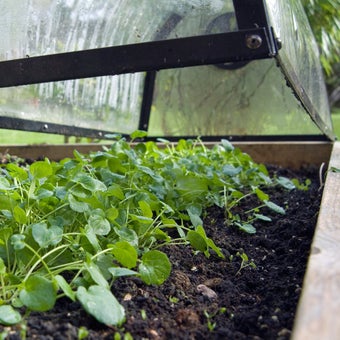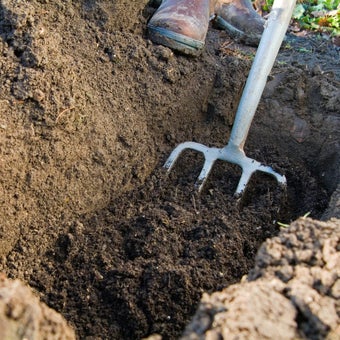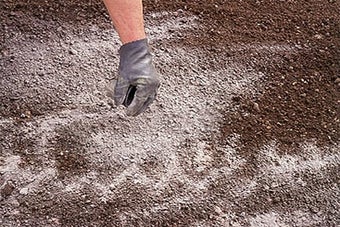
Quick facts
Suitable for - All bare soil
Timing - Autumn to early spring
Difficulty - Easy
Suitable for...
All bare soil is suitable for cultivating (or digging). However, digging around plants is best avoided as it damages roots and so can be harmful.
- Soil cultivation (or digging) is mainly carried out to bury weeds and debris. This is usually followed by surface preparation for sowing and planting
- Cultivation improves soil structure by alleviating compaction, plus it offers the chance to apply fertiliser, manure and lime
- Only minimum cultivation is needed because over-cultivating can damage the soil structure
Digging is called 'primary cultivation' (and could also be carried out by a mechanical rotavator). This is followed by secondary cultivation to produce a fine seedbed, ready for sowing seed or planting.
When to cultivate
Clay soils: are best dug in autumn, but avoid carrying out this task when the soil is wet and claggy. Autumn digging allows the frost to break up the soil over the winter, improving the structure.
Light, sandy soils: are best dug in spring. However, digging can be carried out from autumn to spring, as long as the soil is not or frozen.
Because digging leads to moisture loss, complete it before the warm spring weather arrives.
Rotavating
Consider hiring a mechanical rotavator to do the cultivation for you if time runs short. Light soils can be handled by a two to five horse power model, but hard or needs a larger model. Rotavating wet soil is extremely damaging; wait for drier conditions.
How to single dig
Turning over the soil to a spade’s (or fork’s) depth is called single digging.
Single digging
- Mark out a rectangular plot, mentally divide it into two strips, and lift a small trench, 30cm (1ft) wide, and a spade’s depth, from the end of the first strip
- Place this soil to one side, leaving the trench empty. Then lift the same amount of soil from the area just behind, and drop it back, inverted, into the original trench, breaking it up a little
- Work methodically down the first strip, and then back up the second one, turning each trench into the space before it
- At the end, the final trench is filled with the soil that was left to one side from the first trench
It is worth noting that an alternative method is double digging. This involves inverting a second, deeper layer of soil. This may be hard work but it is perfect for creating new borders and deepening shallow topsoil. It can also be helpful where drainage needs to be improved or where deep-rooted, long-term plants are to be grown, such as asparagus and rhubarb.
Problems
Where digging is not practical, consider sowing and planting into undug soil. Firstly, remove the weeds – see our page on Weeds: non-chemical control for more information. Loosen the soil, if necessary, with a fork or hoe. Unfortunately, really weedy ground or very hard soils are unlikely to respond well. Making narrow beds that can be worked from paths avoids treading on the soil so can be useful.









